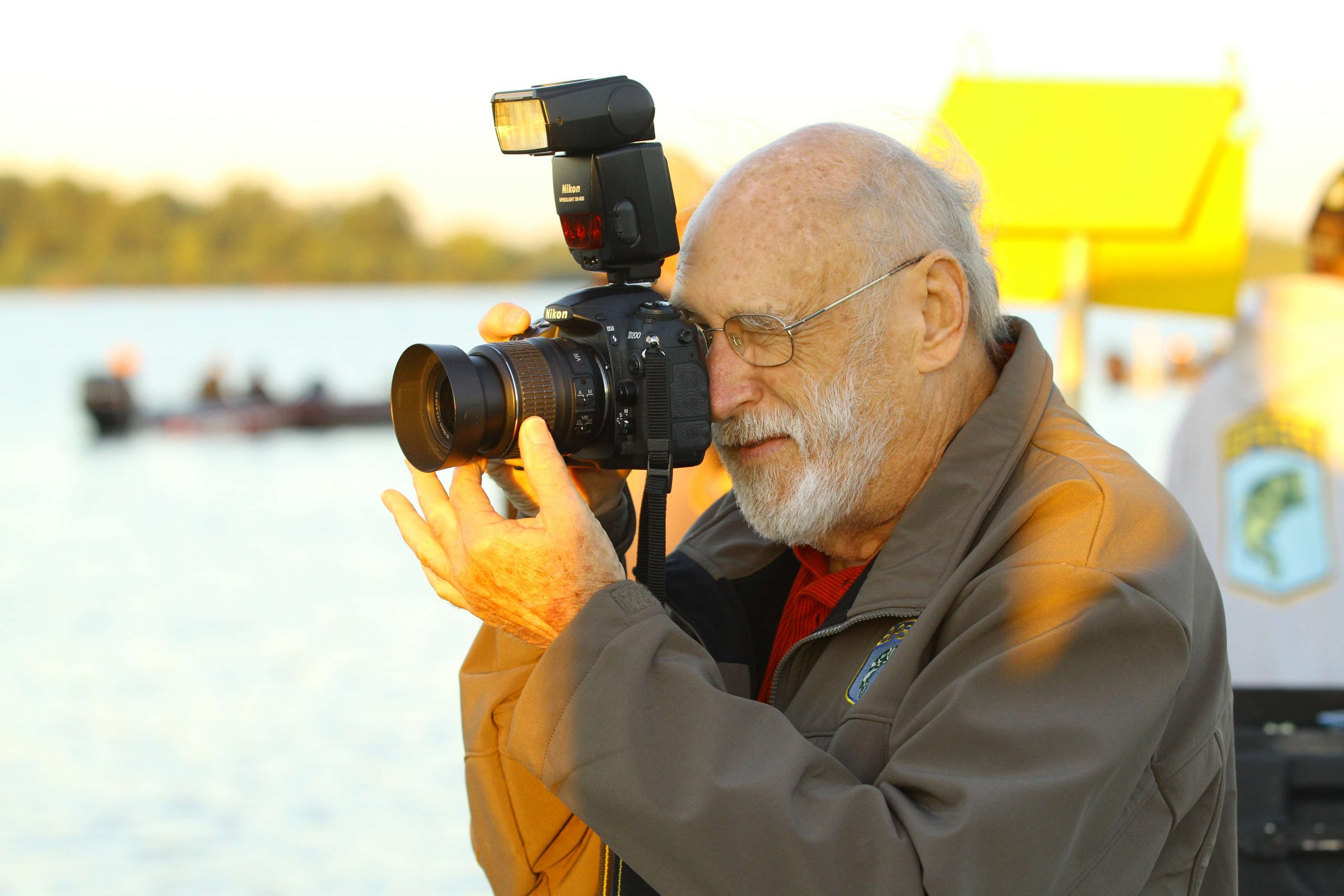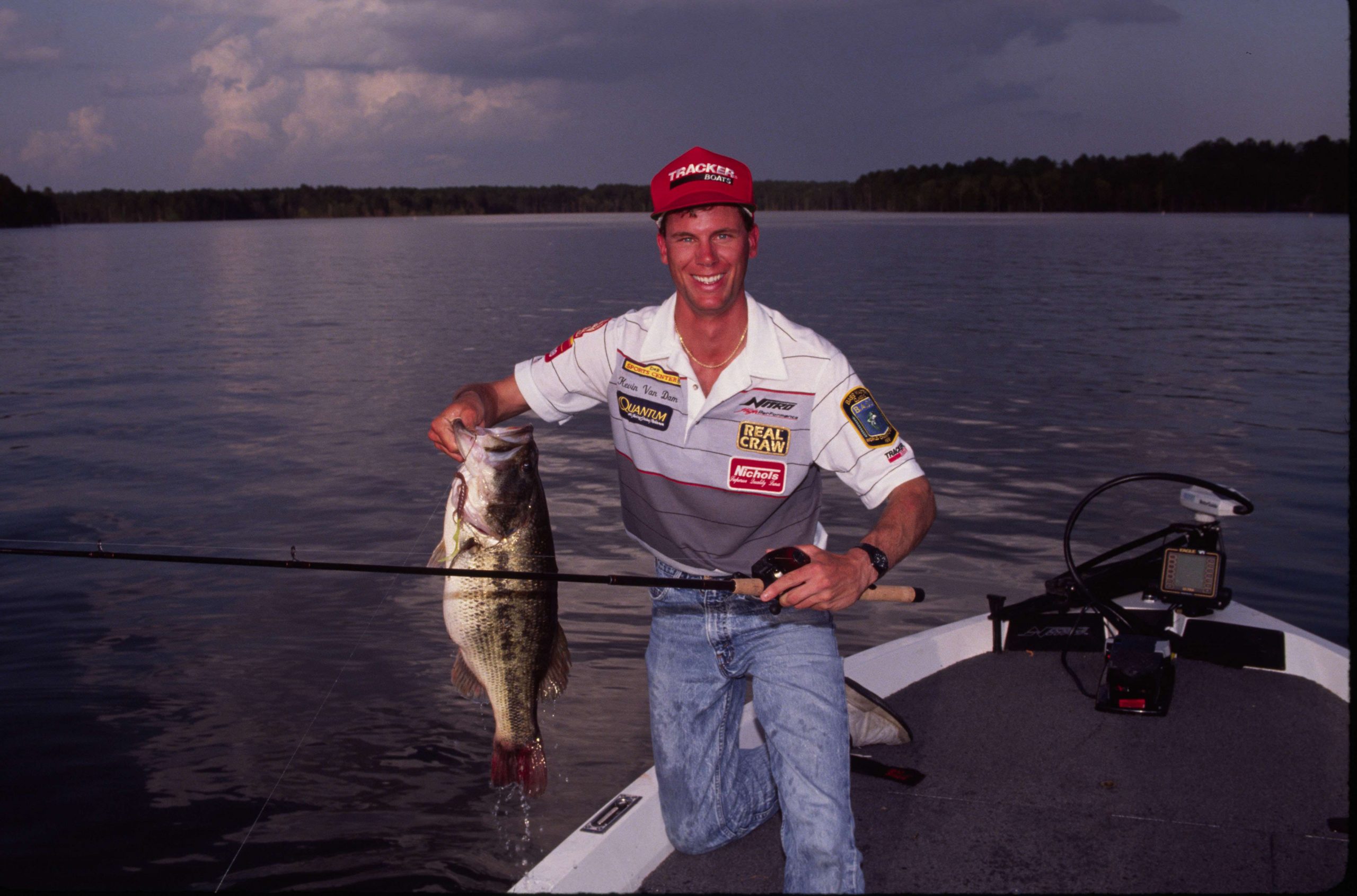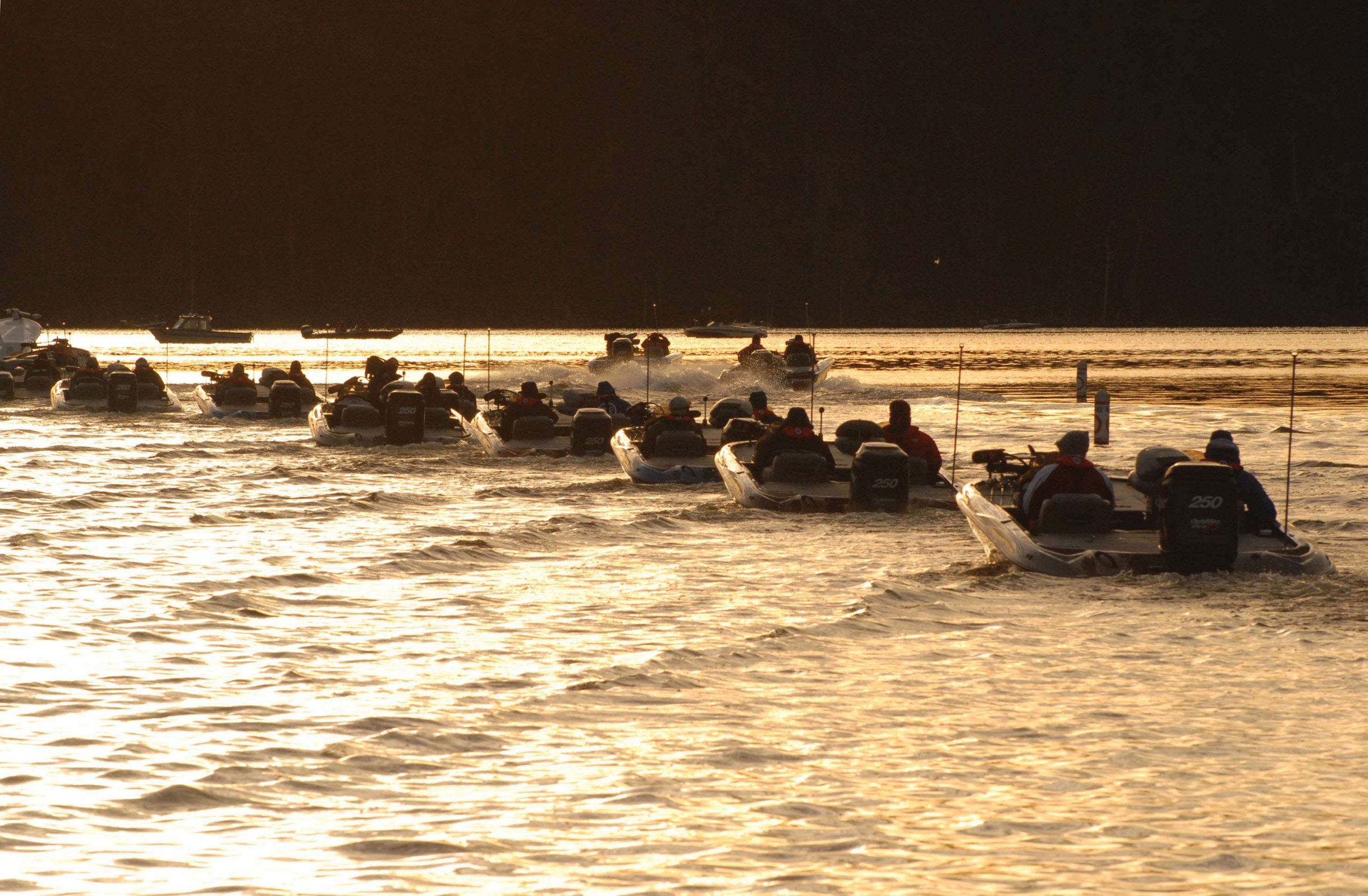
Gerald Crawford never made a cast after nearly three decades of attending B.A.S.S. tournaments, around 430 in all, between 1981 through 2008. That’s a mind-boggling number when you include 27 consecutive Bassmaster Classics.
“Through the years I traveled from Vermont to California and never had a chance to wet a line,” he said with a laugh. “Isn’t that something?”
Not really. Crawford was always too busy. As the first full-time B.A.S.S. photographer he spent nearly three decades following the tournament trail.
Editor’s note: See some of Crawford’s favorite photos.
Retirement hasn’t kept Crawford away from a job he loved. This season he returned as a fan, camera in tow, wearing his customary B.A.S.S. hat and shirt, to the Bass Pro Shops Bassmaster Central Opens.
“I love it all, the anglers and the folks behind the scenes, like me, who bring the stories and images to reality,” said Crawford, who lives in central Texas with wife Faye.
Over the years, much of what Crawford photographed became significant milestones in B.A.S.S. history. Presidential visits, all-time record catches, ground breaking tournaments and more historical events were photographed by him. See a collection of Gerald’s favorite photos here.
He started as a freelancer, joining business partner Caleb Pirtle on a writing and photography assignment at the 1979 Classic. The two ran a successful advertising, marketing and public relations agency in Waxahatchie, Texas. Before that, both were on the ground-breaking team that launched the now iconic Southern Living magazine and brand. In fact, Crawford became chief photographer shortly after the publication launched.
Freelancing led to a full time job opportunity that was too good to pass up. Crawford was around when the B.A.S.S. multimedia machine went roaring off the launch pad in the mid-1980s, a turning point for the organization at the time.
B.A.S.S. hired Ann Lewis as the first director of communications. Photos went out with press releases. The Bassmasters series debuted, signifying a major milestone that brought tournament angling to TV. That added production photos to the workload. At any one time during the month, up to five publications were in production. All needed art support, and much of it came from Crawford.
Oh yeah, the tournaments. There were up to 10 of those to cover, and Crawford attended most of them. He was the one-man band on the water. At bigger events he received a hand from Charles Beck, a business partner and freelancer.

Back in the day there was no BASSTrakk to locate anglers. Cell phones were years from mobile portability. Judging the weather was as tricky as gambling on where the tournament leader might be.
“It was challenging but we always found a way to never miss an important catch, photograph the winning moments,” he said.
Crawford composed his notable share of those. He photographed the 27 Classic champions, and two eventual U.S. presidents are on that list. The 1984 Classic is one of his fondest memories.
In Pine Bluff, Ark., Rick Clunn won an unprecedented third world championship on the Arkansas River. Clunn stirred the weigh-in audience with his emotional “we live in a country where there are no limits” victory speech, referring to his ability to live the American Dream. Standing beside him was Arkansas Governor Bill Clinton and Vice President George H.W. Bush.
“I spent all day on the water photographing Clunn, and the day was only really about to just get started after the final weigh-in,” recalled Crawford. “It was a surreal experience, with so much already having happened on that day.”
A private reception followed with Bush and then a fishing trip. B.A.S.S. founder and president Ray Scott took the future U.S. president fishing on a private lake, security detail in tow. Crawford photographed the now famous image of Bush holding high a trophy largemouth that made the cover of Bassmaster. The long day continued with the awards ceremony, back then a formal affair.
Long days at the Classic were the norm, then as they are now. But they were especially long in the days prior to digital photography.
“Unlike other pro sports events we didn’t have a dark room to process film and make prints, so we had to improvise,” recalled Crawford.
For the unaware, processing print film requires multiple steps. The film must be loaded from cartridge to a developing reel, soaked in processing fluids and allowed to dry. Through it all absolute darkness is a must. The slightest crack of light in a room can ruin an entire roll of film.
“What we’d sometimes do is go in our hotel room bathroom, close the door, stuff towels in the door crack, and sit for 10 minutes to let our eyes acclimate to the darkness,” he said. “Only then would we give it the okay to use as our darkroom.”
Following the bathroom film processing Crawford and Beck developed black and white prints, hanging those to dry like laundry on clothes lines stretched out in their front lines’ dark room. That took staying up until a few hours before the next tournament day began.
“We had photos ready to hand out to the press that morning so they could run with their daily newspaper stories,” he said.
Nowhere in the process is sleep mentioned. There was little of it. Crawford and Beck sometimes only got a few hours of shut-eye.
After the fishing day ended they had barely enough time to reload cameras for the nightly functions. Through the early 1990s those were elaborate affairs. Guests wore costumes at themed nights. Lots of live music and other entertainment played way past bedtime. Elaborate displays of food were highlights. Awards were handed out. Lots of photo ops took up more time, and film, and processing time.
That routine went on for years during the 1980s until technology helped streamline the process. Call it guerilla journalism at it’s finest.
Crawford guesses he and Beck shot up to 200 rolls of black and white and color film at a Classic. He cut the number by one-half at qualifying tournaments. Crawford’s attention to detail was uncanny, but required, since restaging an action photo on the lake was impossible.
The work required a tedious level of organization. Back then color slides got organized into clear, pocketed pages holding 25 slides apiece. Slides were categorized by angler name, up to 50 pages for a tournament.
“I guess I was the original photo archivist,” he said. “We had rows and rows of file cabinets and filled the folders with slides for each angler, event and specific location.”
Somehow, Crawford balanced the needs of covering tournaments with photographing special setups for Bassmaster magazine. He is credited with over 30 cover shots, more than any other photographer. Hundreds of his photos fill the pages of Bassmaster, B.A.S.S. Times, Fishing Tackle Retailer, and years ago, other B.A.S.S. publications such as Southern Outdoors and Southern Saltwater.
Through it all Crawford relishes in the memories.
“At B.A.S.S. we had a special spirit of creativity and there were no limits on where you could go with it,” he said. “I worked with great people whose passion was serving the members, and doing our best to document some pretty neat moments in the sport of bass fishing.”

Crawford felt uniquely blessed, having an extended family waiting him on the weeks away from home.
“More than anything else what was most rewarding were the friendships with the anglers, their families and the sponsors at the tournaments,” he continued. “Wherever we went, strange places or familiar destinations, I always knew when I arrived there would be several hundred of my friends.”
Does he miss it?
“The only part I don’t miss is getting up before daylight, looking out the hotel room window, and seeing the pouring rain,” he said.
Some things will never change.

